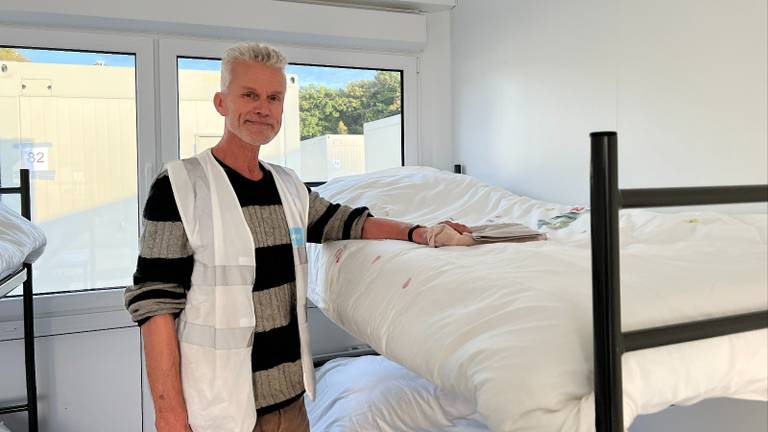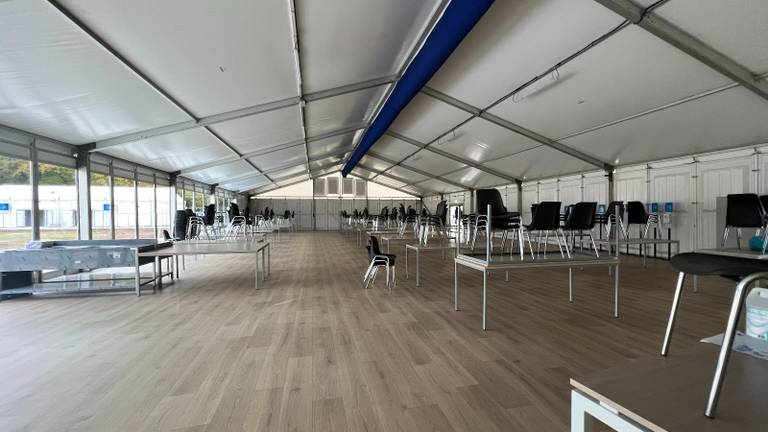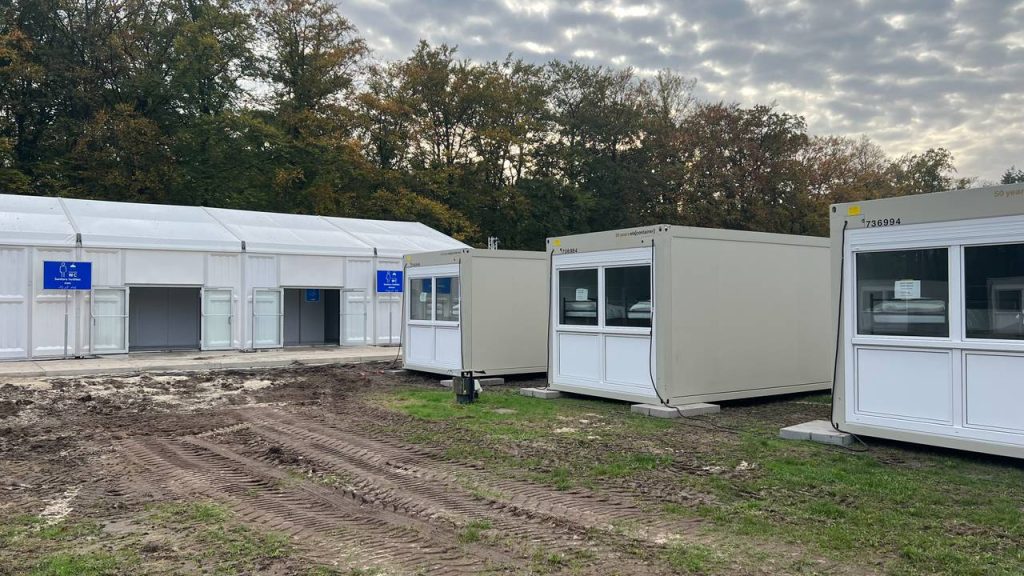From November 1 to mid-February, Boxtel receives a large group of refugees from Ter Apel in 99 housing units in Landgoed Velder. The property is equipped to receive a maximum of 450 asylum seekers. “We focus mainly on families, because we can give it to them the most. They get what they need, but it’s not really luxurious here,” says project leader Inez van Gils as she tours the huge site.
The volunteers are busy bringing furniture and accessories to the housing units. This completes the first half of the shelter. It must be so, because the first refugees from Ter Abel are on the doorstep the day after, Tuesday 1 November. “Since I retired at the beginning of this year, I’ve wanted to help people. I’ve always been a doctor, and that’s in me. Your help is sorely needed in this place,” says volunteer Eric Teichler, 64, of Boxtel.
He helped, among other things, assemble the beds, make them and furnish the living unit with a dresser, table and chairs. It is a matter of time, because in a couple of weeks Felder had to be converted into a reception site.

“The site is usually used for festivals or events. We were only able to start construction in mid-October after the last Elektrum Festival,” says project leader Inez van Gils. Already 45 housing units are ready to receive the first 150 refugees arriving on Tuesday. The other half should be ready by the end of the week.
“A crisis shelter is not a place of recreation.”
The idea of accepting refugees in separate housing units did not come from Boxtel itself. The municipality is inspired by the municipality of Machurst. We’ve researched there and largely adopted their approach, adapting it where necessary. Asylum seekers are at the crisis reception center to hear if they can stay in the Netherlands. In the meantime, we want to give them a nice place and privacy,” says Van Gils.
Having your own living unit instead of a big tent is nice, but it’s definitely not a luxury. Refugees also do not notice that they will be living in a property temporarily. “It must have been fun, but we furnished it in a very discreet and functional way,” explains Van Giles. “They only live here temporarily and the crisis shelter is not a recreational place.”
“The fact that each family has its own place is also great for the neighborhood.”
One family can live with five people per housing unit. There are two bunk beds, a single bed, an iron wardrobe and a table with plastic chairs. They have their own place to sleep and stay during the day.
“The fact that every family has their own place is nice not only for them, but also for the neighbourhood,” says volunteer Eric, who lives in Boxtel himself. Many locals were initially unhappy with the asylum seekers’ arrival. Many were reassured when they heard about the design of the housing units. “We’ve talked a lot with the locals about their concerns,” Van Gils says. “The locals who were initially worried are now volunteers.”
Residents receive what they need in terms of shelter and sanitation. There are also daily programs with activities. They can learn the language, exercise, and go out into nature to plant trees, for example. While Eric was preparing the last family, he said, “In addition to furnishing this place, I want to help the asylum seekers in a different way. I think it would be good to teach them how to cook here, for example. That way we literally look into each other’s kitchen.”
“In real estate we can receive people in a humane way.”
Ter Apel refugees will be received across the province in the coming months with the aim of emptying the application center in Groningen. Compared to most municipalities, Boxtel accommodates a very large group of refugees. Many municipalities have been mandated by the government. In this property we have space to receive many people in a humane way. So we will do it,” says the project leader.


“Total coffee specialist. Hardcore reader. Incurable music scholar. Web guru. Freelance troublemaker. Problem solver. Travel trailblazer.”








More Stories
GALA lacks a chapter on e-health
Weird beer can taste really good.
Planets contain much more water than previously thought